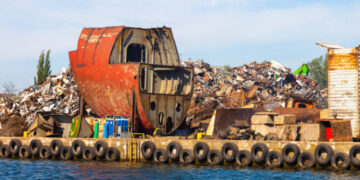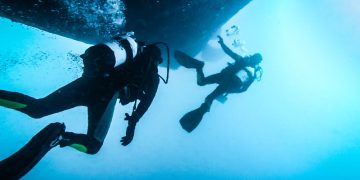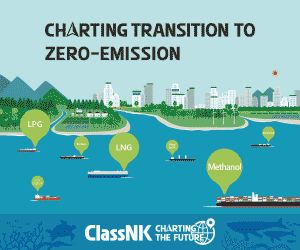Lloyd’s Register (LR) has published a new report which explores how optimised propellers and propulsion energy-saving devices (ESDs) can potentially deliver measurable fuel savings, regulatory compliance, and long-term operational resilience.
According to the Applying Advanced Propeller Designs to Ships report, despite the significant potential for fuel consumption reduction and relatively low cost of many propulsion ESDs, their current adoption across the global merchant fleet remains limited. However, there is a clear upward trend in both newbuild installations and retrofit projects, particularly in vessel segments with high fuel consumption such as bulk carriers, tankers, and containerships.
The primary driver for these retrofits is the clear proposition of reduced fuel consumption and associated regulatory costs. However, accurately establishing fuel-saving potential and return on investment can be complex, requiring careful consideration of material, installation, and operational costs. The introduction of carbon costs to shipping is expected to significantly shorten payback periods for energy-saving technologies.
A key factor driving the uptake of propeller and ESD retrofits is the evolving regulatory landscape, including the IMO’s Carbon Intensity Indicator (CII) and GHG strategy, as well as European regulations such as the EU Emissions Trading System (ETS) and FuelEU Maritime. These regulations directly link a vessel’s operational performance and emissions to financial penalties and compliance requirements, making energy efficiency upgrades increasingly attractive. The demand for retrofits is growing, with a notable trend of newer vessels being upgraded, indicating an increasing urgency for fuel savings.
Key recommendations:
Achieving optimal savings requires careful selection and design optimisation, considering the vessel’s specific operational profile and hull form, often utilising advanced tools like Computational Fluid Dynamics (CFD) and model testing. Thus, the report offers the following recommendations:
#1 Undertake a comprehensive initial assessment
Before committing to a specific technology, operators should conduct a thorough analysis of their vessel’s operational profile, including trading routes, speed profiles, and loading conditions, as well as a detailed evaluation of the existing hull form and propulsion system. This assessment will be crucial in identifying the most suitable ESDs and estimating realistic fuel-saving potential for the specific vessel.
#2 Prioritise rigorous hydrodynamic analysis and design optimisation
To maximise the benefits and avoid potential pitfalls, such as negative interactions between devices or increased underwater radiated noise, it is essential to employ advanced tools like CFD and potentially model testing. The selected propeller and ESD should be designed and optimised to complement each other and the specific characteristics of the vessel.
#3 Address key technical considerations proactively
Retrofitting propellers and ESDs can have implications for torsional vibration within the shafting system, shaft alignment, underwater radiated noise, and biofouling. Operators should conduct torsional vibration analyses, ensure correct shaft alignment during installation, and consider the potential impact on URN when selecting technologies. Furthermore, developing a proactive biofouling management plan for both the hull and the retrofitted components is crucial for sustaining performance gains.
#4 Implement robust performance monitoring and validation
Following the installation of the retrofit, it is vital to establish a system for monitoring the vessel’s performance to validate the predicted fuel savings and identify any unexpected operational issues. Conducting speed trials and comparing pre- and post-retrofit data will provide valuable insights into the actual effectiveness of the implemented technologies.
#5 Adopt a long-term perspective on maintenance and management
To ensure the sustained benefits of the retrofit, operators should adhere to recommended maintenance schedules for the new propeller and ESDs, including regular cleaning and inspections to mitigate the impact of biofouling. Ongoing performance monitoring will help detect any degradation in efficiency over time, allowing for timely intervention and maximising the return on investment.


























































